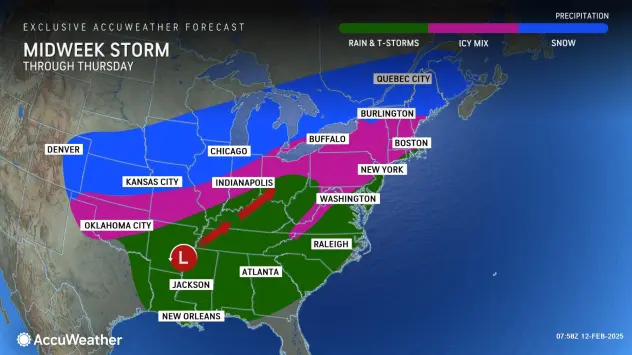Get ready, Midwest! A powerful winter storm is barreling toward the region, set to bring heavy snow, strong winds, and major travel headaches for millions. Chicago and Detroit are right in the storm’s crosshairs, with both cities expected to see several inches of snow and treacherous conditions on the roads and in the air.
Forecasters are calling this one of the most impactful storms of the season, and if you have travel plans midweek, you’ll want to prepare for delays, cancellations, and hazardous conditions.
How Bad Will It Get?
This storm is coming in fast from the Plains and is expected to gain strength as it moves across Illinois, Indiana, and Michigan. Chicago could see anywhere from 4 to 8 inches of snow, while Detroit is looking at 3 to 6 inches.
The worst of the snow will hit Wednesday afternoon and evening, making the evening commute a complete nightmare. Snowfall rates could hit 1 to 2 inches per hour, which means roads could go from clear to completely covered in a matter of minutes.
Adding to the mess, gusty winds up to 40 mph will cause blowing and drifting snow, reducing visibility and making travel even more dangerous. The National Weather Service has already issued Winter Storm Warnings for large portions of the region, urging people to prepare for hazardous conditions.

Expect Major Travel Disruptions
Whether you’re driving, flying, or taking public transit, this storm is going to make things difficult.
- Roads will be slick and snow-covered – if you must drive, give yourself extra time, take it slow, and keep plenty of space between you and other vehicles.
- Flights could be delayed or canceled – airports like O’Hare, Midway, and Detroit Metro are likely to see disruptions, so check your flight status before heading out.
- Public transportation may be affected – buses and trains could be delayed due to road conditions, so plan ahead.
How to Stay Safe and Prepared
- If you can, stay at home. It is preferable to avoid driving if you are not absolutely required to go out.
- Keep the necessities on hand. In case of power disruptions, make sure you have enough blankets, food, water, and batteries.
- Keep an eye on updates. Weather conditions can change fast, so follow local forecasts and alerts.
What’s Next?
Once the snowstorm moves out on Thursday, temperatures will drop, keeping roads icy and travel difficult. Forecasters are also tracking another potential winter system for the weekend, so don’t put away that snow shovel just yet.
